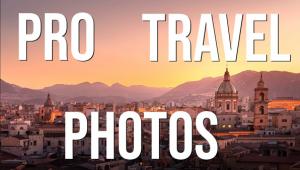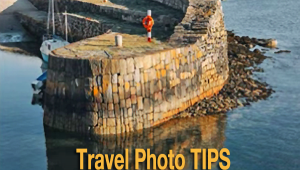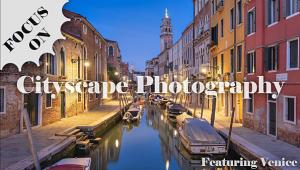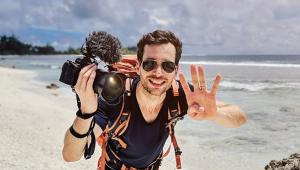Follow the Advice of These Four Top Pros and You’ll Come Home with Captivating Travel Photographs

Whether you’re traveling the world, going on a family vacation, or just taking a quick weekend trip, you want to come home with images that are just as amazing as your memories. Our friends at Macphun teamed up with four top pros who, in their own words, provide the following advice for capturing the travel images of a lifetime.
Ken Kaminesky
A tripod is the one tool that can make a world of difference in the quality of your images. Without one, I wouldn’t have even bothered attempting to get images of this quality and sharpness; the lighting was far too dim to permit using a small aperture like f/11 or f/16 handheld.

Even if you’re not shooting panorama or HDR images, I still recommend using a tripod for stability. There’s no way to handhold a camera with a heavy lens under low-light conditions without incurring camera shake. The resulting blurry images will leave you frustrated and wishing you had listened to me!
Don’t skimp when purchasing a tripod. Consider a carbon fiber model with a lightweight ball head. Keep the tripod solid but as light as possible since you’ll be carrying it day in and day out.
One of the most important “tools” in my arsenal is a good pair of shoes (and wool hiking socks). I used to suffer from so many blisters that it made the days of exploring new locations rather painful. Now, with the right shoes or boots, I can hike 10–20 miles a day in comfort
Jim Nix
If you want photographs of beautiful, popular spots that are blissfully free of tourists, sunrise is the best time to shoot. So get up early. Everyone else will be sleeping and you can wander the streets without anyone in your way.

Thie above image of Temple Bar in Dublin, Ireland, was captured at sunrise. Any other time of day and this area would have been packed with tourists. Getting off the beaten path will not only help you discover hidden gems and interesting spots, but it’s very likely you’ll have them mostly to yourself since tourists generally stick to the “famous” locations.
I captured this street scene while wandering aimlessly in Copenhagen, Denmark

Lesa Snider
One sure way to make your outdoor photographs more visually pleasing is to avoid centering the horizon in your shots. Your images will be more interesting if you place the horizon either higher or lower in the frame.
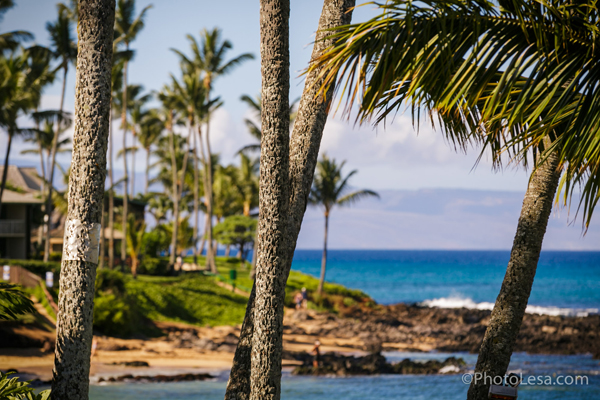
Ask any graphic designer and they’ll tell you that odd numbers of objects are more visually pleasing than even numbers of things. This is a concept you can apply to your photography with great effect. When composing a shot, see if you can position yourself to capture three palm trees instead of two or four; five flowers instead of four, six and so on.
Randy Kepple
Of all the tips I could share for improving your travel photos, the best has nothing to do with cameras or lenses. Rather, it’s all about being a better storyteller. You must develop an understanding of the place you’re visiting, so immerse yourself in the culture and the people. Imagine you’re a stranger in a strange land, experiencing everything for the first time.
Capture details, landscapes, and portraits, and don’t forget to include yourself in the mix. Challenge yourself to tell a story and focus on storytelling elements. What makes the place and the people special? What makes it unique? Strive to capture the answers to these questions in your photos.

Speaking with locals is a great way to discover the best stories, locations and food. Most folks are more than happy to speak with someone who is willing to listen.
As far as gear is concerned, I’m all about traveling as light as possible. And make sure you are intimately familiar with all the equipment you take on your trip. I suggest a wide-angle zoom and a fast prime lens or two. The 50mm prime is one of the most versatile options available, and a fast 35mm enables me to incorporate more of a scene when taking portraits.
I’m not typically a night shooter, but there are times when visiting an art museum or cathedral when flash isn’t permitted. Those extra few stops of light can definitely make or break a photo.
To see more fine work from Kaminesky, Nix, Snider and Kepple, visit their websites.
If you want more travel photography advice, here are five quick tips on how to take better travel images with your smartphone.




